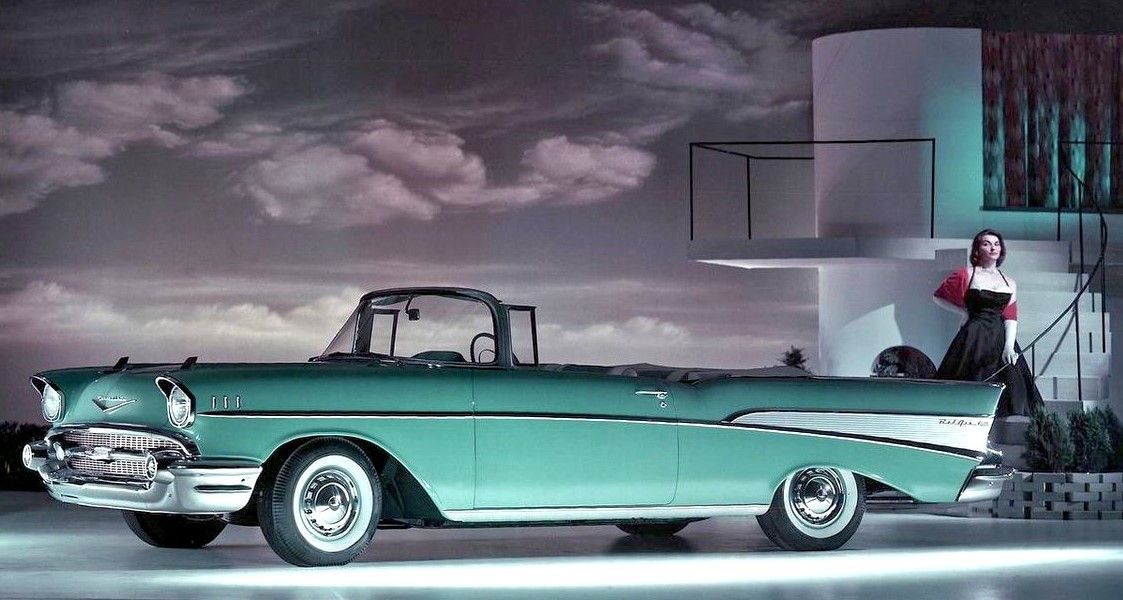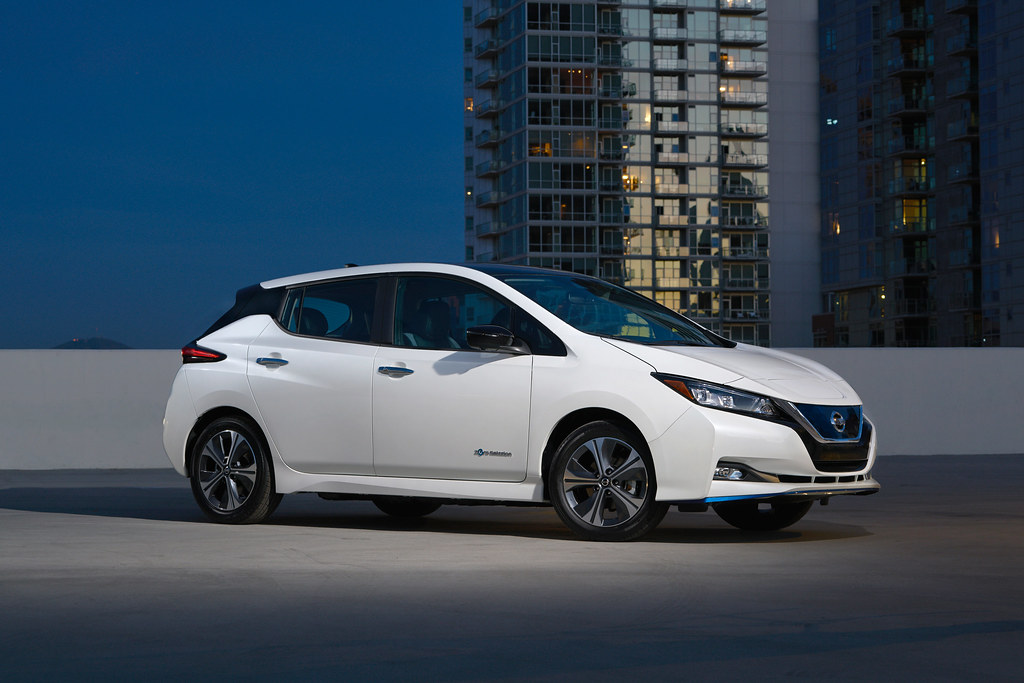
When it comes to purchasing a vehicle, the average consumer often fixates on the sticker price, eye-catching features, and sleek design. We scroll through online listings, compare specifications, and imagine ourselves cruising down the open road in our dream car. But what if there’s a whole layer of crucial information that most buyers overlook? What if the true cost of ownership extends far beyond the initial purchase, lurking in the shadows of unexpected repairs, plummeting resale values, and sky-high insurance premiums?
This is where the wisdom of automotive experts — the mechanics, engineers, and industry veterans who live and breathe cars — becomes invaluable. These are the individuals who see vehicles at their most vulnerable, diagnosing problems, sourcing parts, and tallying up repair bills. They know which cars spend more time in the shop than on the road, which brands hide expensive surprises, and which models simply aren’t worth the headache or the hefty financial drain. Their insights are a powerful antidote to marketing hype and shiny new aesthetics.
So, if you’re looking to make an informed decision and avoid future automotive nightmares, you’ve come to the right place. We’ve tapped into the collective knowledge of these seasoned pros to bring you an in-depth look at the cars and brands they would personally steer clear of, and more importantly, the compelling reasons behind their strong recommendations. Get ready to gain some serious practical consumer insight that could save you thousands of dollars and countless headaches.

1. **Cadillac: A Legacy of Unreliability and Costly Woes**For Ben Mirecki of CarPages, the answer to which car to avoid is unequivocally clear: Cadillac. It’s a brand that might conjure images of luxury and American prestige, but according to Mirecki, the reality on the road tells a different story. He points to consistent, dismal rankings in reliability reports, noting that Cadillac has been “dead last” in Consumer Reports’ most recent list and “consistently ranks in the bottom two or three, year after year.” This isn’t just a minor blip; it’s a persistent pattern of underperformance that savvy mechanics simply can’t ignore.
Mirecki doesn’t mince words, claiming that Cadillacs are “prettier in the driveway than they are reliable on the road.” This sentiment perfectly encapsulates the frustration of owning a vehicle that looks good but constantly lets you down. The core of the problem, he explains, lies in “massive chronic problems coupled with various suspension issues,” which not only lead to frequent breakdowns but also contribute to a less-than-ideal driving experience. Imagine investing in a luxury car only to be plagued by recurring mechanical failures.
Beyond the reliability quagmires, Cadillac ownership is further complicated by practical and financial hurdles. Mirecki highlights the issue of “limited and expensive spare parts,” meaning that when something inevitably goes wrong, getting it fixed can be a drawn-out and costly affair. This can quickly inflate the cost of ownership, transforming a premium purchase into a burdensome financial sinkhole. Adding to the driving woes, he humorously, but accurately, describes the Cadillac’s handling with “the turning circle of a boat,” suggesting that maneuverability is far from its strong suit. These combined factors paint a clear picture of why experts like Mirecki keep their distance.
Read more about: New Car Nightmares: Unpacking 10 Vehicle Models Plagued by Lemon Law Complaints and Recurring Defects

2. **Ford Fiesta: The Transmission Trouble That Keeps On Giving**Sean Pour, the co-founder of SellMax, a nationwide car buying service, delivers a stark warning regarding one particular subcompact car: the Ford Fiesta. For Pour, there’s “number one vehicle I would not purchase is the Ford Fiesta.” This isn’t just a casual observation; it’s a conclusion drawn from extensive, firsthand experience with hundreds of these vehicles that have come through his company’s doors with a notorious and recurring flaw: bad transmissions. This widespread issue has made the Fiesta a cautionary tale among automotive professionals.
Pour reveals the shocking frequency of these transmission failures, noting that some Fiestas arrive at SellMax with only 40,000 miles on the odometer before their transmissions give out. Even more alarming, he states, “Some of our customers have replaced the transmission [on their Ford Fiesta] more than once before it hit 100,000 miles!” This isn’t just a singular defect; it points to a systemic design flaw that makes the Fiesta a ticking time bomb of repair costs, negating any initial savings from its lower price point. Chris Pyle, another auto mechanic and expert, corroborates this by explaining that the Ford Fiesta’s “dual-clutch transaxle” simply “do not hold up.”
The financial implications of these chronic transmission issues are substantial. When these specialized transmissions fail, the owner is “looking at very expensive repair costs,” and to compound the problem, Pyle notes that “most independent shops will not take on” such intricate repairs, forcing owners to go to the dealer, where costs can skyrocket. This ongoing saga of transmission woes has even led to numerous lawsuits against Ford since 2012, as the company was reportedly aware of the PowerShift transmission’s problems yet continued to sell the vehicle. The Ford Fiesta, therefore, stands as a prime example of a car whose initial affordability is overshadowed by its severe, hidden long-term expenses.
Car Model Information: 2018 Ford Fiesta SE
Name: Ford Fiesta
Manufacturer: Ford Motor Company
Production: June 1976 – July 2023
Class: Supermini
BodyStyle: hatchback
Layout: Front-engine, front-wheel-drive layout
Successor: Ford Puma (crossover)
ModelYears: 1978–1980, 2011–2019 (North America)
Categories: 1980s cars, 1990s cars, 2000s cars, 2010s cars, 2020s cars
Summary: The Ford Fiesta is a supermini car that was marketed by Ford from 1976 to 2023 over seven generations. Over the years, the Fiesta has mainly been developed and manufactured by Ford’s European operations, and had been positioned below the Escort (later the Focus).
Ford had sold over 15 million Fiestas from 1976 to July 2011, making it one of the best-selling Ford nameplates behind the Escort and the F-Series. It has been manufactured in the United Kingdom, Germany, Spain, Brazil, Argentina, Venezuela, Mexico, Taiwan, China, India, Thailand, and South Africa.
The Fiesta was discontinued in 2023, after over 22 million units had been made. The final Ford Fiesta rolled off the production line on 7 July 2023.
Get more information about: Ford Fiesta
Buying a high-performing used car >>>
Brand: Ford Model: Fiesta
Price: $8,998 Mileage: 69,789 mi.
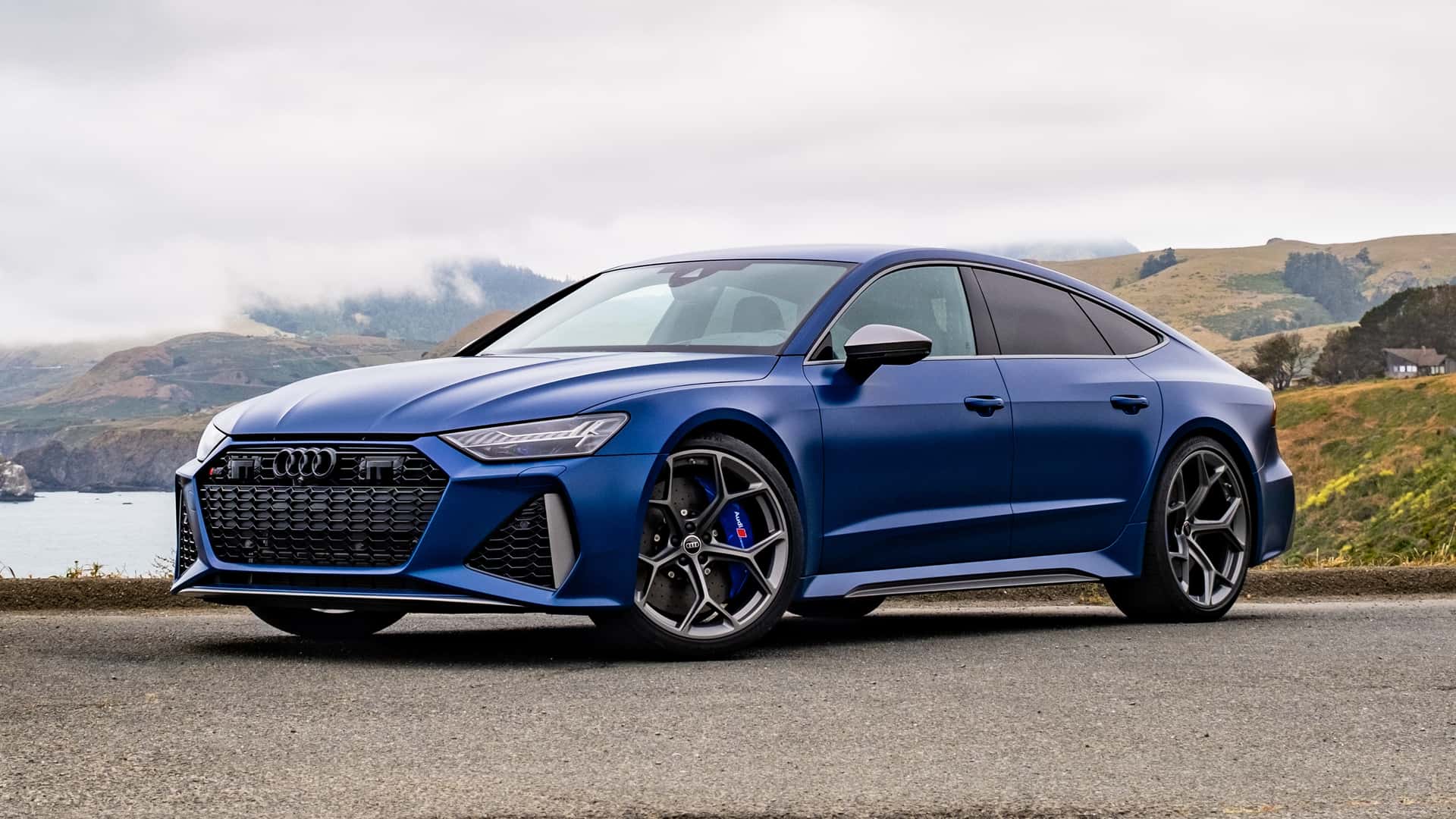
3. **Audi R8: The Supercar with a Shocking Insurance Bill**When you think of a supercar like the Audi R8, visions of exhilarating performance, sleek design, and an undeniably high purchase price come to mind. With an MSRP of $138,700, it’s clearly a vehicle for those with substantial financial means. However, what many prospective buyers might not fully consider is one particular hidden cost that can turn a dream car into a financial nightmare: its shockingly high annual insurance premium. This isn’t merely an inconvenience; it’s a significant ongoing expense that driving experts point to as a reason to avoid the R8.
While the buyer of an R8 might seem equipped to handle the average annual premium of $4,102, the true red flag lies in the trajectory of these costs. According to the Zebra, a prominent insurance comparison platform, the “average insurance cost for an Audi R8 increased by almost 150 percent from 2017 to 2018.” This dramatic surge in just one year highlights an unpredictable and rapidly escalating expense that can make even a luxury car ownership unsustainable. It signals a trend of increasing risk and cost associated with the vehicle, which insurance companies are quick to reflect in their premiums.
This staggering increase isn’t just about the initial premium; it’s about the volatile nature of the cost of ownership. Such a rapid rise indicates that the R8 isn’t just expensive to insure, but that the market perceives it as an increasingly high-risk vehicle, perhaps due to repair costs, accident rates, or theft vulnerability. For an automotive expert, this kind of financial instability and the sheer magnitude of the annual insurance bill make the Audi R8 a questionable investment, no matter how thrilling its performance. The joy of driving can quickly diminish when the recurring costs threaten to consume a significant portion of your annual budget.
Car Model Information: 2018 Audi R8 5.2 V10 plus
Caption: Audi R8 V10 Plus (Type 4S)
Manufacturer: Audi
Production: June 2006 – March 2024,(45,949 Units)
Class: Sports car
BodyStyle: coupé
Layout: Longitudinal engine,Mid-engine design,rear-wheel-drive
Sp: uk
ModelYears: 2007–2024
Categories: 2010s cars, 2020s cars, All articles with unsourced statements, Articles with short description, Articles with unsourced statements from March 2019
Summary: The Audi R8 is a mid-engine, 2-seater sports car, which uses Audi’s trademark quattro permanent all-wheel drive system. It was introduced by the German car manufacturer Audi AG in 2006. Production ended in the first quarter of 2024.
The car is exclusively designed, developed, and manufactured by Audi AG’s private subsidiary company manufacturing high performance automotive parts, Audi Sport GmbH (formerly quattro GmbH), and was inspired by the Lamborghini Gallardo albeit the second generation is built using the Huracán platform. The fundamental construction of the R8 is based on the Audi Space Frame, and uses an aluminium monocoque which is built using space frame principles. The car is built by Audi Sport GmbH in a newly renovated factory at Audi’s ‘aluminium site’ at Neckarsulm in Germany. At the time it was introduced in 2006, the R8 became the first production car with full-LED headlamps.
Get more information about: Audi R8
Buying a high-performing used car >>>
Brand: Audi Model: R8
Price: $154,995 Mileage: 24,065 mi.
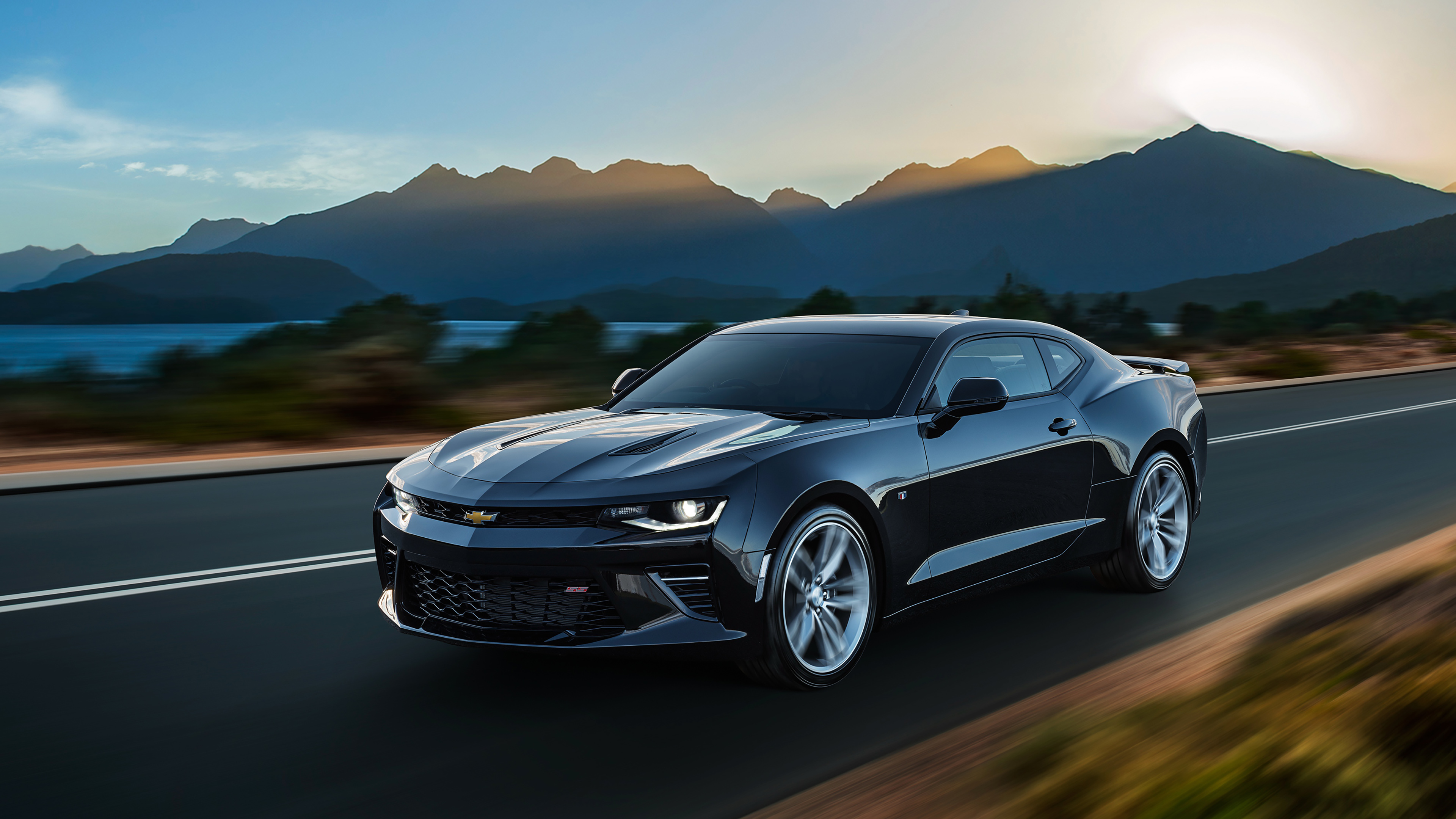
4. **Chevrolet Camaro: Losing the Muscle Car Race on All Fronts**In the fiercely competitive arena of American muscle cars, the Chevrolet Camaro has, unfortunately, fallen behind its rivals, as observed by Deepesh Chauhan of Car Indigo. He states quite bluntly that “the Camaro has lost out to all other rivals in a big way.” This isn’t just about sales figures; it’s about the vehicle’s overall market perception and its future, which appears grim. The situation has deteriorated to such an extent that General Motors will be “pulling the plug on the vehicle by 2022,” a clear indication of its struggles and the manufacturer’s lack of confidence in its long-term viability.
Chauhan cites several compelling reasons why he would personally avoid buying a Camaro, with one of the most significant being its alarming depreciation rate. He highlights that “the sports car loses nearly 45 percent of its value in the first two years.” This rapid plunge in resale value means that owners are effectively throwing money away from the moment they drive it off the lot. Such substantial depreciation quickly erodes the financial equity in the vehicle, making it a poor investment for anyone considering future trade-ins or sales. The joy of ownership is severely dampened when you realize how quickly your asset is diminishing in worth.
Beyond the financial hit, Camaro owners are reportedly experiencing a litany of severe mechanical and electrical problems. Chauhan reports widespread issues such as “Faulty steering column wiring, early coolant leaks, engine blowing off, and plenty of other severe issues are being reported by owners.” These aren’t minor inconveniences; these are significant, potentially dangerous, and certainly expensive problems that speak to underlying quality control issues. For a driving expert, a car that depreciates rapidly and suffers from such critical and diverse defects is simply not a wise purchase, signaling a product that prioritizes fleeting aesthetic appeal over lasting reliability and value.
Car Model Information: 2018 Chevrolet Camaro 1SS
Name: Chevrolet Camaro
Manufacturer: Chevrolet
Production: 1966–2002,2009–2023
ModelYears: 1967–2002,2010–2024
Class: Pony car
BodyStyle: coupe,convertible
Platform: GM F platform,GM Zeta platform,GM Alpha platform
Layout: Front-engine, rear-wheel-drive layout
Categories: 1970s cars, 1980s cars, 1990s cars, 2+2 coupés, 2000s cars
Summary: The Chevrolet Camaro is a mid-size American automobile manufactured by Chevrolet, classified as a pony car. It first went on sale on September 29, 1966, for the 1967 model year and was designed to compete with the Ford Mustang. The Camaro shared its platform and major components with the Firebird, produced by General Motors’ Pontiac division that was also introduced for the 1967 model year.
Four distinct generations of the Camaro were developed before production ended in 2002. The nameplate was revived on a concept car that evolved into the fifth-generation Camaro; production started on March 16, 2009.
Production of the sixth generation of the Camaro ended in December 2023, for the 2024 model year.
Get more information about: Chevrolet Camaro
Buying a high-performing used car >>>
Brand: Chevrolet Model: Camaro
Price: $33,988 Mileage: 49,199 mi.
_SD4_Pure_Tech_4WD_5-door_wagon_(2015-11-13)_01.jpg/1200px-2013_Land_Rover_Range_Rover_Evoque_(L538_MY13.5)_SD4_Pure_Tech_4WD_5-door_wagon_(2015-11-13)_01.jpg)
5. **Range Rover & Land Rover: Money Pits of Mechanical and Electrical Woes**While Range Rover vehicles certainly have their admirers, often drawn to their luxurious appeal and off-road capabilities, automotive experts caution against their purchase due to a pervasive reputation for unreliability and exorbitant costs. Jake McKenzie of Auto Accessories Garage notes that the Range Rover “is notorious for having frequent mechanical problems and above-average repair costs.” This isn’t merely anecdotal; owners frequently take to online forums, actively complaining and warning prospective buyers to “expect the unexpected,” from persistent “check-engine lights” to unsettling “strange noises.” Such widespread owner dissatisfaction is a clear red flag for anyone considering this brand.
McKenzie further emphasizes that another significant deterrent to owning a Range Rover is the prohibitive cost of insurance. He explains that “Insurance rates higher than the national average make this vehicle one of the biggest money pits in the automotive world.” This means that even if you can afford the luxury price tag, the ongoing expenses for both repairs and insurance can quickly spiral out of control, making it an unsustainable choice for many. The allure of luxury often blinds buyers to these critical financial realities, which experts are quick to highlight.
Cameron Lee, an automotive engineer, reiterates these concerns, extending them to the broader Land Rover brand. He states that the brand “has been criticized for frequent electrical system failures and air suspension problems.” These are complex issues that often require specialized knowledge and expensive parts to rectify. Lee confirms that “Repairs on Land Rovers can be notoriously expensive, with the cost of maintaining these vehicles being prohibitively high.” RepairPal estimates the average annual cost of repairs to be a staggering $1,174, while CarEdge reports that these vehicles can cost an average of $18,569 in maintenance and repairs during the first decade of ownership. When you combine high purchase prices—starting around $58,000—with such steep recurring costs, it becomes clear why experts view Land Rovers as a financial gamble.
Car Model Information: 2021 Honda Accord EX-L 1.5T
Name: Range Rover (L460)
Manufacturer: Jaguar Land Rover
ModelCode: L460
Designer: Gerry McGovern
Production: 2022–present
Assembly: Solihull
Class: Full-size SUV
BodyStyle: Sport utility vehicle
Layout: Front-engine, four-wheel-drive layout
Platform: Jaguar Land Rover car platforms#MLA-Flex
Related: Range Rover Sport#L461
Engine: Petrol engine,Straight-six engine,twin-turbo,Diesel engine,3.0 L twin-turbo I6,3.0 L twin-turbo I6 MHEV,Petrol engine,3.0 L turbo I6 PHEV
Motor: ubl
Abbr: on
Drivetrain: class=nowrap,Mild hybrid,Plug-in hybrid,P510e/P550e)
Transmission: ZF 8HP transmission
Battery: Kilowatt-hour,Lithium-ion battery
Wheelbase: class=nowrap,{{convert,2997,mm,in,1,abbr=on
Length: class=nowrap,{{convert,5052,mm,in,1,abbr=on
Width: class=nowrap,{{convert,2047,mm,in,1,abbr=on
Height: 1870 mm
Weight: [object Object]
Sp: uk
Predecessor: ubl
Categories: All-wheel-drive vehicles, All Wikipedia articles written in British English, All articles containing potentially dated statements, All articles with unsourced statements, Articles containing potentially dated statements from 2023
Summary: The Land Rover Range Rover (L460), generally shortened to Range Rover, is the fifth generation of the Range Rover, a range of mid- and full-size luxury crossovers produced by Land Rover. It was revealed in London on 26 October 2021. The car is available in two different wheelbases, and the vehicle is available in guises consisting of petrol, petrol mild hybrid, petrol plug-in hybrid, and diesel mild hybrid. A seven-seater option was available slightly after launch.
Get more information about: Range Rover (L460)
Buying a high-performing used car >>>
Brand: Range Rover Model: Range Rover
Price: $19,900 Mileage: 81,000 mi.

6. **BMW X3: Rapid Depreciation and Repair Shop Headaches**Another luxury SUV that Deepesh Chauhan of Car Indigo strongly advises against is the BMW X3. While it offers the premium experience associated with the BMW brand, it comes with a significant downside that can severely impact an owner’s financial well-being: rapid depreciation. Chauhan reveals a shocking statistic, noting that the X3’s “value depreciates as much as 70 percent of the MSRP in just 5 years.” This means that a substantial portion of your initial investment evaporates within half a decade, making it a particularly poor choice for those concerned about resale value or long-term financial planning. Imagine the sting of seeing such a large percentage of your car’s worth simply vanish.
Beyond the depreciation, the BMW X3 presents considerable challenges when it comes to maintenance and repairs. Chauhan explains that “Due to the sophisticated electronics on-board, the X3 can’t be easily repaired by your mechanic in your neighborhood, either.” This forces owners to seek out specialized dealerships or high-end independent shops, which often come with a premium price tag for labor and diagnostics. The complexity of modern luxury vehicles, while contributing to advanced features, also translates directly into higher service costs and fewer repair options, adding another layer of financial burden to ownership.
Furthermore, sourcing necessary replacement parts for the BMW X3 can be both “tricky” and “costly.” This combination of specialized repairs and expensive, hard-to-find components means that even routine maintenance or unexpected fixes can quickly become a major financial drain. Chauhan’s advice is clear: if you end up wanting to sell your BMW X3 quickly, you should “expect the value to have dropped considerably.” For driving experts, a vehicle that sheds value so aggressively and comes with such high repair hurdles is simply not a sensible purchase, regardless of its initial appeal.
Car Model Information: 2024 BMW X3 xDrive30i
Name: BMW X3
Manufacturer: BMW
Production: 2003–present
Class: Compact luxury crossover SUV
BodyStyle: SUV
Caption: BMW X3 (G45)
Categories: 2010s cars, All-wheel-drive vehicles, All Wikipedia articles written in British English, All articles with bare URLs for citations, Articles with bare URLs for citations from July 2025
Summary: The BMW X3 is a compact luxury crossover SUV manufactured by BMW since 2003, based on the BMW 3 Series platform. BMW markets the car as a Sports Activity Vehicle, the company’s proprietary descriptor for its X-line luxury vehicles.
The first-generation X3 was designed by BMW in conjunction with Magna Steyr of Graz, Austria—who also manufactured all X3s under contract to BMW. BMW manufactured the second-generation X3 at their Spartanburg plant in South Carolina, United States. Starting with the third generation, BMW South Africa’s Rosslyn plant began production of the X3, alongside the Spartanburg plant, after the facility underwent a major upgrade to prepare for the X3 production, replacing the long-running 3 Series production in the plant. About 76,000 units will be manufactured there annually.
The car was the first mid-size, premium SUV on the market. In 2008, BMW started competing with the Mercedes-Benz GLK-Class (renamed GLC-Class since 2016), and numerous other SUVs in this segment. The X3 is smaller than the X5 and X6, and bigger than the X1 and the X2.
The battery electric model is sold as the BMW iX3.
Get more information about: BMW X3
Buying a high-performing used car >>>
Brand: BMW Model: X3
Price: $30,495 Mileage: 43,794 mi.
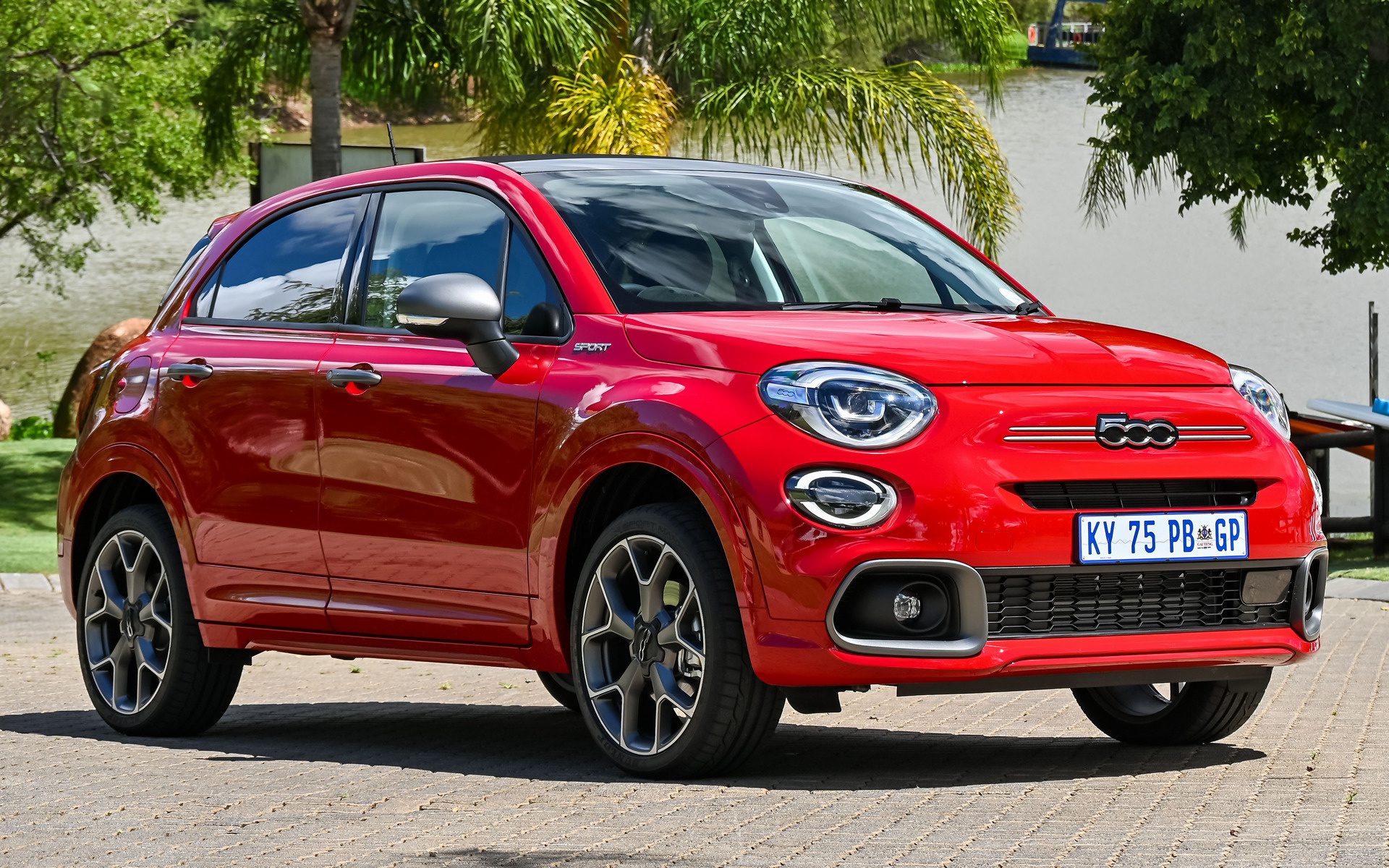
7. **Fiat 500 & Jeep Renegade: Cute Covers Hiding Frequent Repair Demands**The Fiat 500 often charms buyers with its distinctive, “cute” aesthetic, but as automotive experts frequently warn, you cannot judge a book—or a car—by its cover. Deepesh Chauhan points out that the current generation of Fiat 500s are “built either in Mexico or Poland, which translates to a low quality of parts.” This manufacturing detail leads to a cascade of problems, including “the cheap quality of the alloys that break down easily, engine and transmission blowing up, and a lot more.” The initial cuteness quickly fades when faced with such widespread and severe mechanical failures. Chauhan also highlights the brand’s history of recalls, with “the most severe being the faulty electronic power steering wiring that could have lead to short-circuits.”
Chris Pyle, another experienced mechanic, groups the Fiat 500 with the Jeep Renegade, noting that they “share the same chassis and the need for repairs.” For Pyle, the issue isn’t always the absolute cost of individual repairs, but rather “the frequency in which they are needed.” This constant demand for service means these cars spend an inordinate amount of time off the road. He vividly describes the situation: “For many, these cars spend more time sitting in a car lot waiting for repairs compared to being driven trouble-free,” a frustrating reality for any car owner.
Edmunds Car Review further supports these expert opinions on the Jeep Renegade, giving the 2023 model a low value rating of 6 out of 10. Reviewers noted, “The Renegade is one of the most expensive vehicles in its class,” and critically, “That might be OK if you got lots of features and value for the price, but you don’t.” Similarly, while the 2023 Fiat 500x fared slightly better with a 7 out of 10, reviewers still disliked its “expensive price tag” and “charmless accessory sounds.” These vehicles, while potentially appealing aesthetically, ultimately fail to deliver on reliability, value, and overall ownership satisfaction, making them an easy pass for driving experts.
Car Model Information: 2013 FIAT 500 Abarth
Name: Fiat 500
Caption: 1970 Fiat 500 L
Aka: Puch 500
Manufacturer: Fiat Automobiles
Production: 1957–1975,3,893,294 units
Assembly: Turin,Desio
Designer: Dante Giacosa
Class: City car
BodyStyle: ubl
Layout: Rear-engine, rear-wheel drive layout
Doors: Suicide door,Car door#Conventional
Related: Autobianchi Bianchina,NSU/Fiat Weinsberg 500,Vignale Gamine,Autobianchi Giardiniera
Engine: Cubic centimetre,499 cc I2,594 cc I2
Transmission: Manual transmission
Wheelbase: {{convert,1840,mm,in,1,abbr=on
Abbr: on
Length: 2970 mm
Width: 1320 mm
Height: 1320 mm
Weight: 499 kg
Predecessor: Fiat 500 “Topolino”
Successor: Fiat 126,Fiat 500 (2007)
Sp: uk
Categories: 1960s cars, 1970s cars, All Wikipedia articles written in British English, All articles with unsourced statements, Articles containing Italian-language text
Summary: The Fiat 500 (Italian: Cinquecento, pronounced [ˌtʃiŋkweˈtʃɛnto]) is an economy / city car that was manufactured and marketed by Fiat Automobiles from 1957 until 1975. It was sold as a two-door semi-convertible or saloon car and as a three-door panel van or estate car.
Launched as the Nuova (new) 500 in July 1957, as a successor to the 500 “Topolino”, it was an inexpensive and practical small car. Measuring 2.97 metres (9 feet 9 inches) long, and originally powered by a rear-mounted 479 cc two-cylinder, air-cooled engine, the 500 was 24.5 centimetres (9.6 inches) smaller than Fiat’s 600, launched two years earlier, and is considered one of the first purpose-designed city cars.
In 1959, Dante Giacosa received a Compasso d’Oro industrial design prize for the Fiat 500. This marked the first time a Compasso d’Oro was awarded to an automotive manufacturer.
Get more information about: Fiat 500
Buying a high-performing used car >>>
Brand: FIAT Model: 500
Price: $10,995 Mileage: 35,183 mi.

8. **Ford: Beyond the Fiesta, Broader Reliability Concerns**While the Ford Fiesta might be notorious for its transmission troubles, experts like Craig Tribe, an automotive engineer and national sales manager at TechniJet, advise approaching Ford vehicles in general with caution, especially their pickup trucks. Tribe points directly to “reliability concerns” across the brand, suggesting that the issues extend beyond just one problematic model. This broader concern means that potential buyers need to look deeper than just specific model reputations when considering a Ford.
The data backs up these reservations, offering a stark picture of Ford’s dependability. According to the J.D. Power Dependability Study, Ford vehicles average approximately 239 problems per 100 vehicles. This places them firmly among the least reliable brands, a statistic that translates directly into a higher likelihood of maintenance and repairs for owners down the line. It’s a clear signal that owning a Ford might come with more trips to the service center than many other brands.
When those inevitable repairs do arise, they can be a significant financial drain. RepairPal estimates the average annual maintenance cost for Ford vehicles to be around $775, which is notably higher than many competitors. Over a decade, Tribe calculates that “maintaining a Ford vehicle can cost around $9,860.” The most common headaches include engine problems, transmission failures, and electrical system malfunctions, a trio of issues that can quickly make ownership a costly affair, far surpassing the initial purchase price.
Consider, for instance, a popular model like the Ford F-150. With a starting cost of $36,965, and some models soaring up to $78,440, the upfront investment is substantial. Add to this a combined MPG of around 18 (city and highway), meaning higher fuel costs, and you start to see how the overall cost of ownership for a Ford can escalate dramatically. Experts urge buyers to look at this full financial picture, not just the attractive monthly payment.
Car Model Information: 2018 Ford Fiesta SE
Name: Ford Fiesta
Manufacturer: Ford Motor Company
Production: June 1976 – July 2023
Class: Supermini
BodyStyle: hatchback
Layout: Front-engine, front-wheel-drive layout
Successor: Ford Puma (crossover)
ModelYears: 1978–1980, 2011–2019 (North America)
Categories: 1980s cars, 1990s cars, 2000s cars, 2010s cars, 2020s cars
Summary: The Ford Fiesta is a supermini car that was marketed by Ford from 1976 to 2023 over seven generations. Over the years, the Fiesta has mainly been developed and manufactured by Ford’s European operations, and had been positioned below the Escort (later the Focus).
Ford had sold over 15 million Fiestas from 1976 to July 2011, making it one of the best-selling Ford nameplates behind the Escort and the F-Series. It has been manufactured in the United Kingdom, Germany, Spain, Brazil, Argentina, Venezuela, Mexico, Taiwan, China, India, Thailand, and South Africa.
The Fiesta was discontinued in 2023, after over 22 million units had been made. The final Ford Fiesta rolled off the production line on 7 July 2023.
Get more information about: Ford Fiesta
Buying a high-performing used car >>>
Brand: Ford Model: Fiesta
Price: $8,998 Mileage: 69,789 mi.
Read more about: Steer Clear: The 15 Overrated Car Brands Riddled with Maintenance Nightmares and Low Reliability
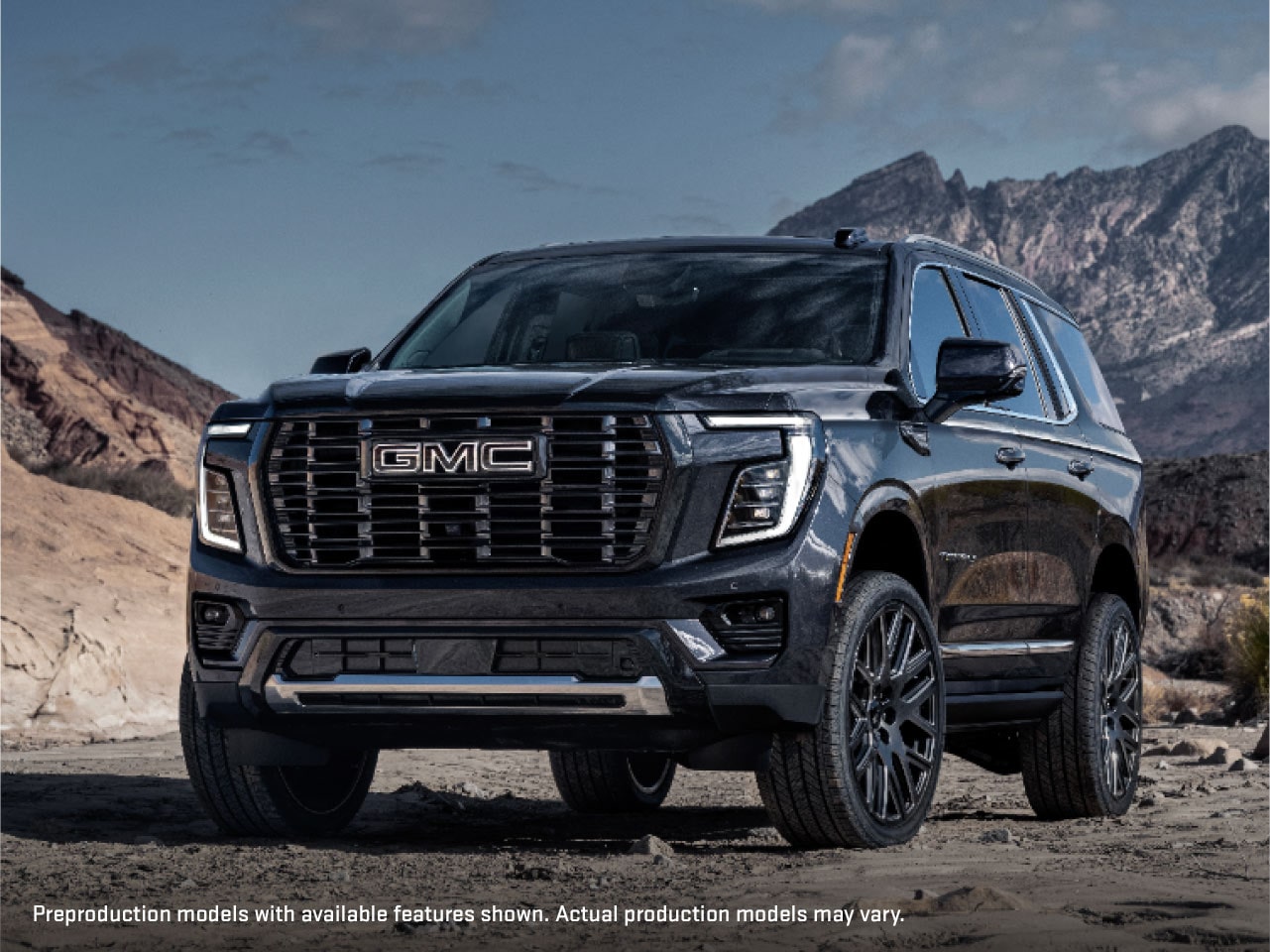
9. **GMC: Impressive Design, Persistent Mechanical Headaches**GMC vehicles often turn heads with their impressive features and robust designs, but Cameron Lee, an automotive engineer and CEO of ACCURL, suggests that buyers should proceed with caution. Lee points out that despite their appealing aesthetics, GMCs tend to come with their own distinct set of reliability issues, particularly when it comes to their mechanical systems. It’s a classic case of form over function potentially leading to future frustrations for owners.
The cost of addressing these mechanical woes can be quite substantial. Lee warns that “Repair costs for GMC vehicles can be steep, especially when dealing with drivetrain or suspension problems.” These aren’t minor fixes; they often involve complex components and specialized labor, pushing repair bills higher. RepairPal data corroborates this, showing that GMCs average $744 per year in maintenance alone, with owners potentially spending close to $8,000 in the first decade on repairs and maintenance.
And let’s not forget the initial investment. A brand new all-wheel drive GMC SUV can easily start around $45,000, quickly climbing higher depending on trim and options. Couple this with potentially excessive fuel costs – a 2024 GMC Yukon, for example, only gets an estimated 21 MPG in the city and 27 MPG on the highway – and the financial outlay continues long after the purchase. For experts, these recurring costs make GMC a less-than-ideal long-term commitment.
10. **Volvo: Luxury with a Side of EV Reliability Woes**For many, Volvo conjures images of safety and Scandinavian luxury. However, Craig Tribe advises against buying a Volvo, particularly highlighting the brand’s recent struggles with reliability. He specifically draws attention to problems with their new electric vehicles, suggesting that while the industry is moving towards electrification, Volvo’s transition hasn’t been without its significant bumps. It’s a stark reminder that even premium brands can stumble when innovating.
The numbers certainly paint a challenging picture. The J.D. Power Dependability Study reports that Volvos experience a significant 245 problems per 100 vehicles, a statistic that puts them on the higher end of the problem spectrum for luxury brands. Furthermore, CarEdge research indicates that these vehicles can cost an average of $13,513 in maintenance and repairs over the first decade of ownership, exceeding the industry average for luxury vehicles. This translates to substantial out-of-pocket expenses for owners.
Adding to the financial burden, Volvos also carry a 30.46% chance of requiring a major repair within the first 10 years, a statistic that can make any prospective owner pause. Tribe further elaborates on common problem areas, including “electrical system failures, infotainment malfunctions and other high-tech component issues.” These are often intricate, costly repairs that chip away at the luxury experience. While models like the XC60 start at $48,345 and the new electric EX30 at $34,950, experts warn these initial prices don’t tell the whole story of long-term financial commitment.
Car Model Information: 2021 Honda Accord EX-L 1.5T
Name: Volvo Car AB
NativeName: Volvo Personvagnar AB
Logo: File:Volvo-Iron-Mark-Black.svg
Type: Public company
TradedAs: OMX
Industry: automotive industry
Foundation: [object Object]
Location: Gothenburg,Sweden
AreaServed: Worldwide
KeyPeople: ubl
Products: Luxury cars
Production: increase 709,000 vehicles
ProductionYear: 2023
Revenue: increase}} {{SEK
RevenueYear: 2023
OperatingIncome: decrease}} {{SEK
IncomeYear: 2023
NetIncome: decrease}} {{SEK
NetIncomeYear: 2023
Assets: increase}} {{SEK
AssetsYear: 2023
Equity: increase}} {{SEK
EquityYear: 2023
NumEmployees: decrease 45,000
NumEmployeesYear: 2023
Parent: Geely Holding
Subsid: Unbulleted list
Homepage: https://www.volvocars.com/intl|volvocars.com
Categories: 1999 mergers and acquisitions, 2010 mergers and acquisitions, 2021 initial public offerings, All articles needing additional references, All articles with unsourced statements
Summary: Volvo Car AB, trading as Volvo Cars (Swedish: Volvo personvagnar, styled VOLVO in the company’s logo) is a Swedish multinational manufacturer of luxury vehicles. Volvo is headquartered in Torslanda, Gothenburg. The company manufactures SUVs, station wagons, and sedans. The company’s main marketing revolves around safety and its Swedish heritage and design.
Volvo Cars has been separate from its former parent conglomerate and producer of heavy trucks, buses, and construction equipment (among others) AB Volvo since 1999 when AB Volvo sold its automobile division Volvo Cars to Ford Motor Company for US$6.47 billion. On 28 March 2010, Ford sold Volvo Cars at a loss to Geely Holding for $1.8 billion; the deal closed in August 2010. Volvo Cars was publicly listed on the Nasdaq Stockholm stock exchange in 2021, though Geely Holding still retains majority ownership. Volvo Cars and AB Volvo share the Volvo logo, and cooperate in running the Volvo Museum.
In March 2021, Volvo Cars announced that it would be a fully electric brand by 2030, with vehicles sold exclusively online. In June 2021, Volvo Cars and Swedish battery developer and manufacturer Northvolt announced the intention to establish a 50/50 joint venture consisting of a battery gigafactory and R&D (research and development) center. In December 2021, it was revealed the battery R&D center would be located in Gothenburg. In February 2022, Gothenburg was also chosen as the location for the battery gigafactory.
During 2021 and 2022, Volvo Cars transferred its hybrid engine research and production capabilities in Skövde and Zhangjiakou to Aurobay, in a joint venture with Geely. In 2023, Volvo removed conventional engines as an option, meaning mild hybrids are the base engine option in the US.
Volvo Cars owns 18% of Polestar and 50% of NOVO Energy (electric vehicle batteries), 100% of Zenseact (AD and ADAS software), and 100% of HaleyTek (Android-based infotainment systems). As of 2022, Volvo Cars has production plants in Torslanda in Sweden, Ridgeville, South Carolina in the United States, Ghent in Belgium, and Daqing in China.
Get more information about: Volvo Cars
Buying a high-performing used car >>>
Brand: Volvo Model: Electric Vehicles
Price: $19,900 Mileage: 81,000 mi.
Read more about: Steer Clear: These 9 Brands Are the Biggest Speed Bumps on Your Road to Automotive Satisfaction in 2025

11. **Mercedes-Benz: A Luxury Brand’s Slipping Dependability**Mercedes-Benz, once a benchmark for engineering and luxury, is a popular brand that Craig Tribe believes is not always worth its considerable cost. While these vehicles certainly command a premium price—ranging from $40,000 to an eye-watering $110,000 for new 2024 models—and often offer decent mileage, the expert consensus points to an unsettling decline in dependability, making their maintenance unexpectedly expensive. The allure of the three-pointed star, it seems, can mask underlying issues.
Tribe directly addresses this shift, stating that “This car was once a paragon of reliability and engineering, [but] Mercedes-Benz has seen a decline in dependability.” He specifically calls out issues with transmissions and some driver-assist features that require frequent repairs. This isn’t just anecdotal; the J.D. Power Dependability Study reports 218 problems per 100 vehicles, a figure that unfortunately places Mercedes-Benz in a fairly unreliable category for a luxury marque.
The financial repercussions for owners are equally significant. CarEdge estimates that Mercedes-Benz vehicles can accrue $15,986 in maintenance expenses over 10 years. For a brand synonymous with quality, these figures highlight a hidden cost that many buyers might not anticipate. Experts suggest that while the initial driving experience might be luxurious, the ongoing commitment in terms of repairs and maintenance can quickly sour the ownership experience, eroding the perceived value of such a prestigious brand.
Read more about: Unmasking the Money Pits: 12 Vehicles and Recalls That Cost You Dearly After Warranty Expires
12. **Rivian: Innovative EVs with Pricey Reliability Headaches**In the burgeoning electric vehicle market, Rivian stands out with its innovative designs and impressive performance. Yet, Cameron Lee, a seasoned automotive engineer, strongly advises potential buyers to steer clear. From his professional vantage point, “Rivian is a brand that buyers might want to avoid,” citing that despite their cutting-edge appeal, Rivian vehicles “have been plagued with reliability issues.” It’s a tough pill to swallow when you’re investing in the future of automotive technology.
Adding to this caution, Chris Pyle, another expert mechanic, places Rivian squarely among the top cars he wouldn’t buy, explaining that the sheer “cost of ownership once a motor or battery fails, and the repair cost is far more than the vehicle value.” Electric vehicles inherently come with higher repair costs than gasoline-powered cars, and for Rivian, this is compounded by the difficulty in finding both the specialized parts and skilled technicians required for their unique architecture.
Pyle vividly illustrates the financial shock of Rivian ownership, noting that “The high cost of collision repairs and collision insurance can often be a car payment in itself.” This isn’t an exaggeration. A Rivian owner on an online forum recounted how a seemingly minor accident—a bent bumper cover and dented tailgate—resulted in mechanics needing to disassemble the truck’s rear end, leading to two and a half months of repairs and a staggering final bill of over $42,000, despite an initial estimate of just $1,600. When you consider the 2025 Rivian R1T starts at $71,700, such repair costs can easily dwarf the vehicle’s actual worth, making it a high-risk investment.
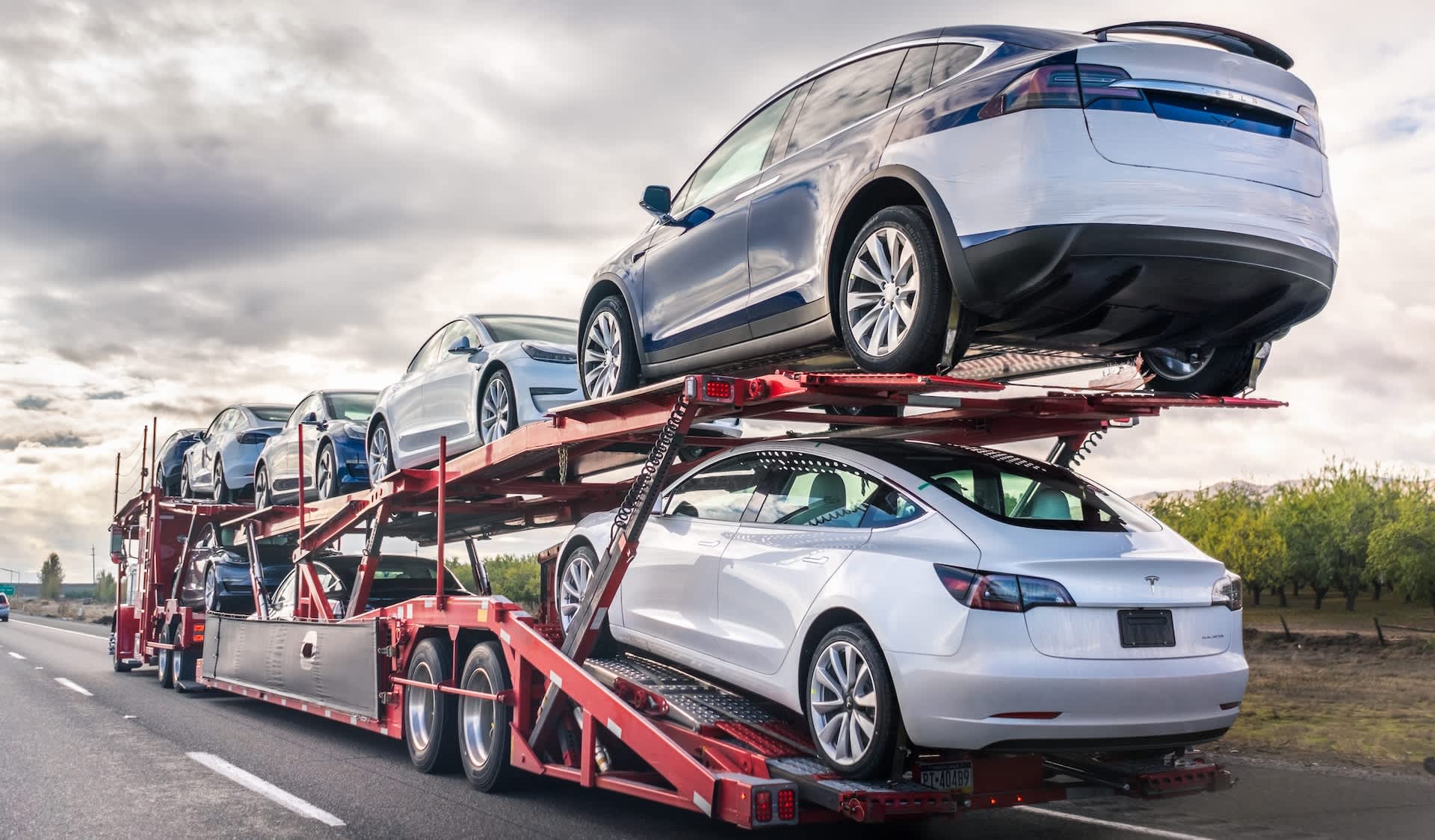
13. **Tesla: High-Tech Dream, Higher Repair Bill Reality**Tesla has undeniably revolutionized the automotive world, proving that electric vehicles can be both desirable and high-performing, complete with cutting-edge interiors and impressive range. However, this dream quickly turns into a financial nightmare when repairs are needed. Chris Pyle ranks Tesla right alongside Rivian as a car he would never buy, primarily because “the cost of ownership once a motor or battery fails, and the repair cost is far more than the vehicle value.” Even with a 2024 Tesla Model 3 starting at nearly $41,000, experts warn that the true cost is far greater.
Dash Lewis, writing for Jalopnik, a trusted voice in car culture, reinforces this sentiment, identifying Tesla as one of the most expensive cars to repair and maintain. Owners can anticipate an average of $5,552 in repair costs during their ownership. A significant reason for these elevated expenses lies in the proprietary nature of Tesla’s components; their car parts are unique and difficult to source, and much like other luxury brands, you’re going to pay premium prices for them.
This trend holds true even when comparing Tesla to its EV counterparts. Lewis’s estimates suggest that it costs approximately $1,078 more to repair a Tesla over its lifetime than other electric vehicles. This isn’t just about general EV repair costs; it’s about Tesla’s specific ecosystem leading to additional financial burdens. The cutting-edge technology and sleek design, while appealing, ultimately come with a substantial, often hidden, price tag when it comes to long-term maintenance and unexpected failures.
Car Model Information: 2021 Honda Accord EX-L 1.5T
Name: Tesla Model 3
Manufacturer: Tesla, Inc.
Production: 2017–present
Assembly: unbulleted list
Designer: Franz von Holzhausen
Class: Mid-size car
BodyStyle: Sedan (car)
Layout: unbulleted list
Related: Tesla Model Y
Motor: unbulleted list
Transmission: Single-speed fixed (9:1 ratio)
Battery: unbulleted list
ElectricRange: unbulleted list
Charging: unbulleted list
Wheelbase: cvt
Length: unbulleted list
Width: cvt
Height: unbulleted list
Weight: cvt
Caption: 2019 Tesla Model 3 Performance
Categories: 2020s cars, ANCAP large family cars, All-wheel-drive vehicles, All Wikipedia articles in need of updating, All Wikipedia articles written in American English
Summary: The Tesla Model 3 is a battery electric powered mid-size sedan with a fastback body style built by Tesla, Inc., introduced in 2017. The vehicle is marketed as being more affordable to more people than previous models made by Tesla. The Model 3 was the world’s top-selling plug-in electric car for three years, from 2018 to 2020, before the Tesla Model Y, a crossover SUV based on the Model 3 chassis, took the top spot. In June 2021, the Model 3 became the first electric car to pass global sales of 1 million.
A facelifted Model 3 with revamped interior and exterior styling was introduced in late 2023 for countries supplied by Gigafactory Shanghai and in early 2024 in North America and other countries supplied by the Tesla Fremont Factory.
Get more information about: Tesla Model 3
Buying a high-performing used car >>>
Brand: Tesla Model: Model 3
Price: $19,900 Mileage: 81,000 mi.
Read more about: Beyond the Showroom Shine: A Mechanic and Enthusiast’s Unvarnished Truth About 13 Cars and Why New Isn’t Always Better
14. **Any New Truck: The Steep Price of Instant Gratification**It might sound counterintuitive, but Chris Pyle, a pragmatic auto mechanic, issues a broad warning against purchasing *any* new truck—be it from Ford, Dodge, Chevy, Nissan, or Toyota. His reasoning is straightforward and impactful: “The light-duty up to the heavy-duty models are way overpriced.” In a market where new vehicle prices are soaring, particularly for trucks that have become multifaceted workhorses and luxury cruisers, Pyle argues that the initial investment simply doesn’t make financial sense.
The primary culprit? Rapid depreciation. Pyle emphasizes that “In the first five years of ownership, you are going to lose about 35% to 55% of the car value in the $30,000 to $50,000 price range.” This substantial loss of value means that the moment you drive a new truck off the lot, a significant portion of your investment evaporates. It’s a harsh reality that makes buying used a far more financially prudent decision, allowing the first owner to absorb the steepest depreciation hit.
To put this into perspective, CarEdge, an online vehicle reseller, estimates that a Ford F-350 Super Duty, for example, would depreciate by 36% after five years. Assuming an original selling price of $76,350, its five-year resale value would hover around $49,000. That’s a nearly $27,000 loss in just half a decade. For experts who prioritize long-term value and smart spending, the immediate depreciation of new trucks makes them a definitive item to avoid.

15. **Jeep Grand Cherokee: High Purchase Price, Higher Repair Headaches**While reviewers at carparts.com might rate the Jeep Grand Cherokee as “average” in terms of dependability, giving it a 3.5 out of 5 from RepairPal, Chris Pyle’s expert opinion is far less forgiving. He includes the Grand Cherokee on his list of vehicles to avoid, painting a picture of a car that demands a lot upfront and continues to demand more throughout its lifespan. This highlights a disconnect between general market perception and the boots-on-the-ground experience of mechanics.
Pyle lists a number of compelling reasons why he would personally steer clear, stating that Jeep Grand Cherokees are “plagued with high-cost repairs, premature parts failure from bad manufacturing, and they want too much to purchase the vehicle when new.” These aren’t minor inconveniences; they point to fundamental issues with quality and design that lead to persistent, expensive problems. For a vehicle with a premium price tag, this pattern of premature failure is a significant red flag.
Given the inherent risks and high ongoing costs, Pyle offers a crucial piece of advice for anyone still considering a new Jeep Grand Cherokee: “If you plan to purchase a new one, before the warranty is over, make sure to purchase an extended warranty.” This recommendation itself speaks volumes about the expected reliability and the potential financial drain awaiting owners. For driving experts, a car that combines a high purchase price with a high probability of costly, premature repairs is simply not a wise investment.
**The Bottom Line: Smart Choices Save Your Wallet (and Your Sanity)**
So there you have it, folks! From the luxury sedans that silently bleed your bank account dry to the beloved trucks that shed value faster than a convertible loses its top, our journey through the expert-avoided list has been eye-opening. What unites these diverse vehicles isn’t always a lack of initial appeal or innovative features, but rather a hidden world of chronic breakdowns, sky-high insurance premiums, relentless depreciation, and repair costs that could easily buy you another car.
These automotive experts, with their grease-stained hands and encyclopedic knowledge of what truly happens under the hood, offer invaluable insights that marketing campaigns and flashy showrooms simply can’t. They remind us that the true cost of car ownership isn’t just about that monthly payment; it’s about the countless hours spent in repair shops, the constant worry of another check-engine light, and the frustrating reality of an asset rapidly losing its worth.
Car Model Information: 2021 Honda Accord EX-L 1.5T
Name: Jeep Grand Cherokee
Manufacturer: Jeep
Production: 1992–present
ModelYears: 1993–present
Class: unbulleted list
BodyStyle: sport utility vehicle
Layout: unbulleted list
Chassis: Vehicle_frame#Uniframe
Categories: 2000s cars, 2010s cars, 2020s cars, All-wheel-drive vehicles, All Wikipedia articles written in American English
Summary: The Jeep Grand Cherokee is a range of mid-sized sport utility vehicles produced by American manufacturer Jeep. At its introduction, while most SUVs were still manufactured with body-on-frame construction, the Grand Cherokee has used a unibody chassis from the start.
Get more information about: Jeep Grand Cherokee
Buying a high-performing used car >>>
Brand: Jeep Model: Grand Cherokee
Price: $19,900 Mileage: 81,000 mi.
Read more about: New Car Nightmares: Unpacking 10 Vehicle Models Plagued by Lemon Law Complaints and Recurring Defects
Ultimately, making an informed car purchase means looking beyond the immediate gratification and delving into the long-term realities. It means heeding the warnings from those who see vehicles at their most vulnerable, day in and day out. Their advice isn’t just about saving you money—though it will certainly do that—it’s about saving you headaches, stress, and the deep regret of investing in a vehicle that simply wasn’t worth the ride. Drive smart, and your wallet will thank you!



